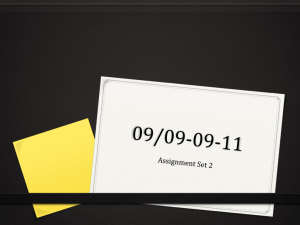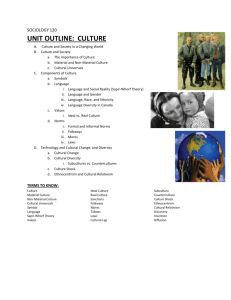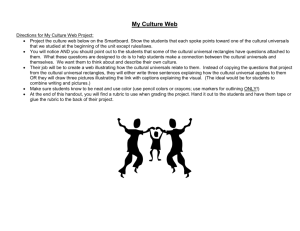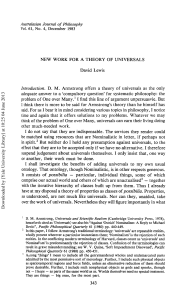Chapter 7: Slides
advertisement
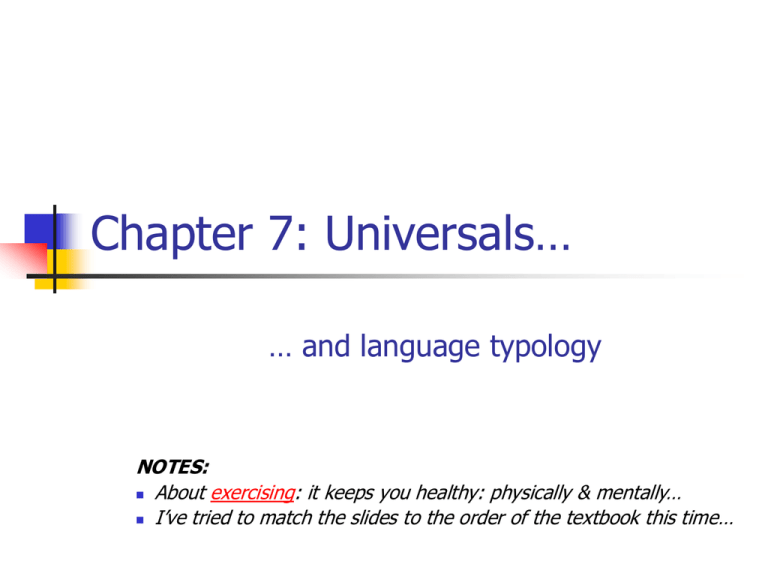
Chapter 7: Universals… … and language typology NOTES: About exercising: it keeps you healthy: physically & mentally… I’ve tried to match the slides to the order of the textbook this time… Language Universals Determine what is possible and impossible in language structure For Example Languages appear to have /p, b, t, d, k, g/ OR JUST /p, t, k/ BUT NOT /b, d, g/ Word Order… SOV watashi-wa I (subject) inu-ga dog (object) saw (I saw a dog) OSV (default structure) watashi-ga inu-wa I (object) dog (subject) (A dog saw me) VOS *mimashita (saw) mimashita mimashita saw (marked structure) inu-ga watashi-wa dog (object) I (subject) Word Order Continued What is English’s default word order? Can we change to a marked structure? Why would we want to? Given what we’ve discussed… Is there a universal word order? Why Do We Care? Practical (About Universals) Simplifies language study & description Theoretical Understanding Human mind Social organization of everyday life Cautions Deep information on limited set > 6,000 languages < 1,000 well researched & documented Cognitive & social inferences Typically based on logic (not solid proof) Language Typology Classifying languages according to their structural characteristics Typology Categories Default Word Order Phonological Characteristics SVO, SOV, etc Voiced stops or not Language Groupings May be mixed Should be meaningful Not related to language families Semantic Universals Basic terms: (blue, dog, man…) Morphologically simple Less specialized in meaning Not recent additions to the language Pronouns All languages (appear to) have 1st person pronouns 2nd person pronouns Phonological Universals All languages: At least three vowel phonemes High front, Low, High back Never more nasal vowels than non-nasal Notice: Rules include “either… or” “tend to have…” “generally…” Remember /p,t,k/ from slide #2 Syntactic & Morphological Word order revisited… Tendency for Subject to precede Object Word order can be manipulated for rhetorical effect Standard word order affects Possession Prepositions vs. postpositions Head noun of relative clauses Now You Try It For a language you know, what is its word order? What’s the relationship between: Possessor and possessed Pre/post-position & noun phrase Relative Clause & head noun Hedges Revisited Absolute Universals All languages have at least 3 vowels Universal Tendencies Verb initial languages tend to use preposition + noun phrase Possible Origins of Universals Monogenetic theory Physiological factors Phonological: High, Low, Back Cognitive processing All languages from one source Children’s acquisition patterns Social issues Pronouns Recommended Exercises TBA Enough of each to get the point

